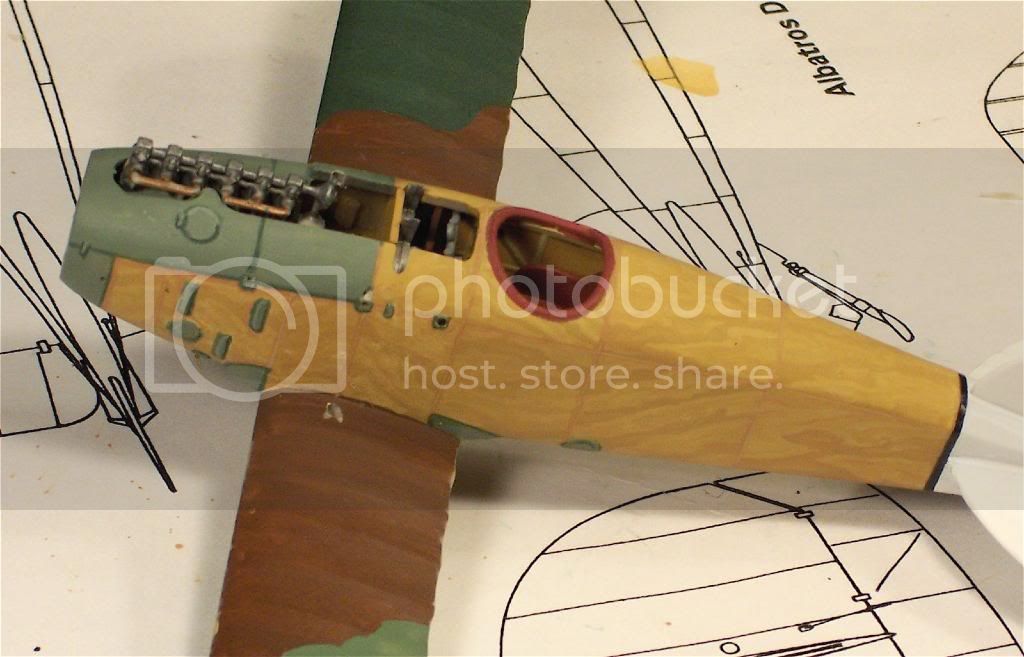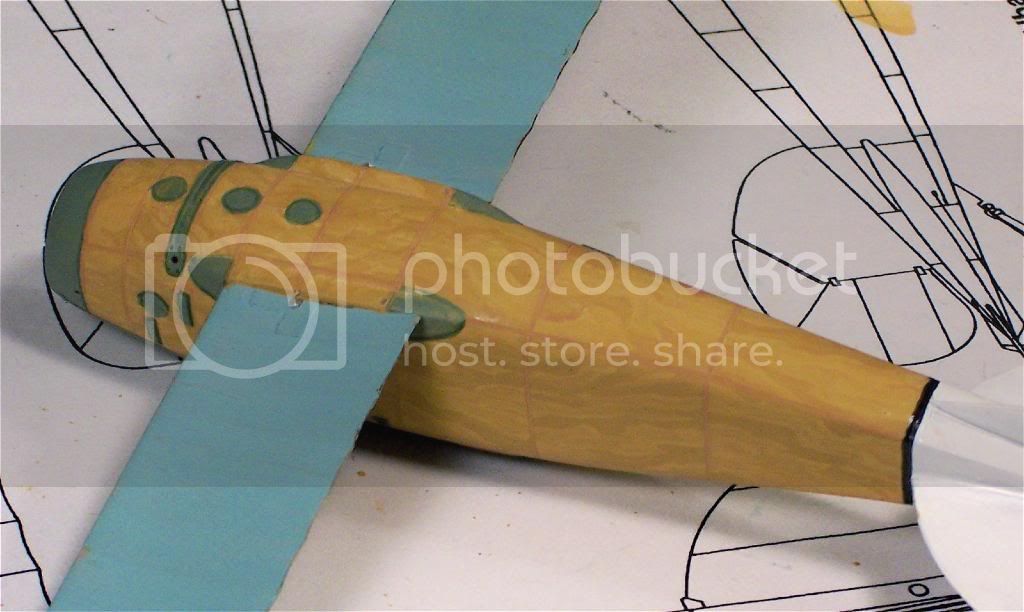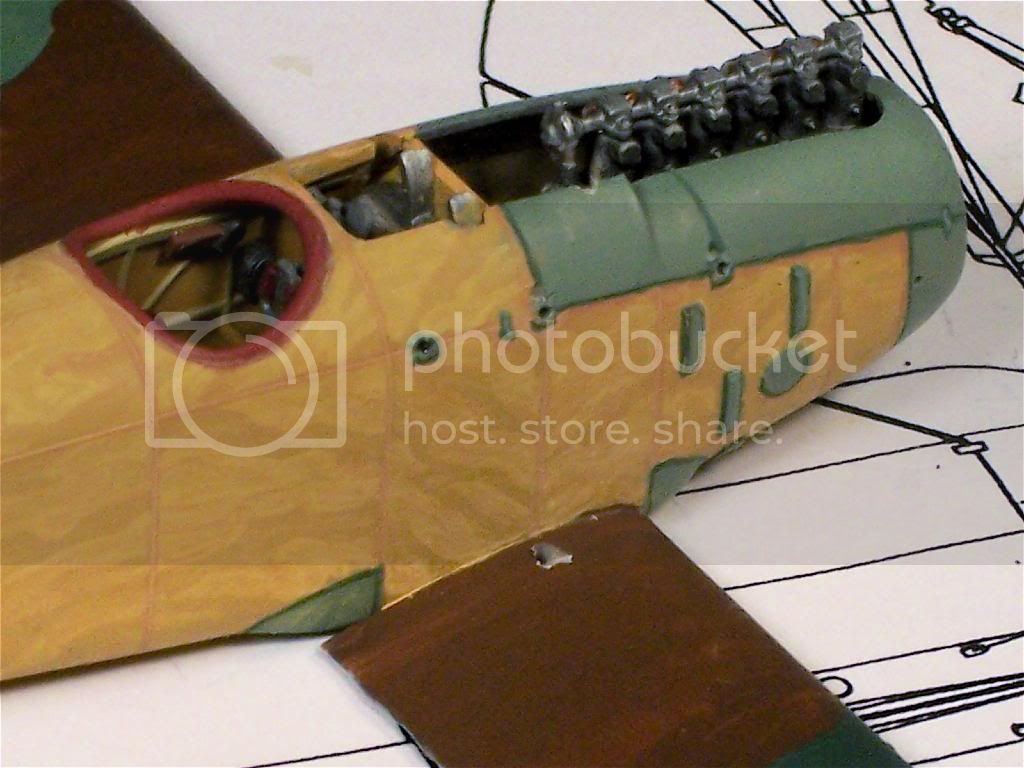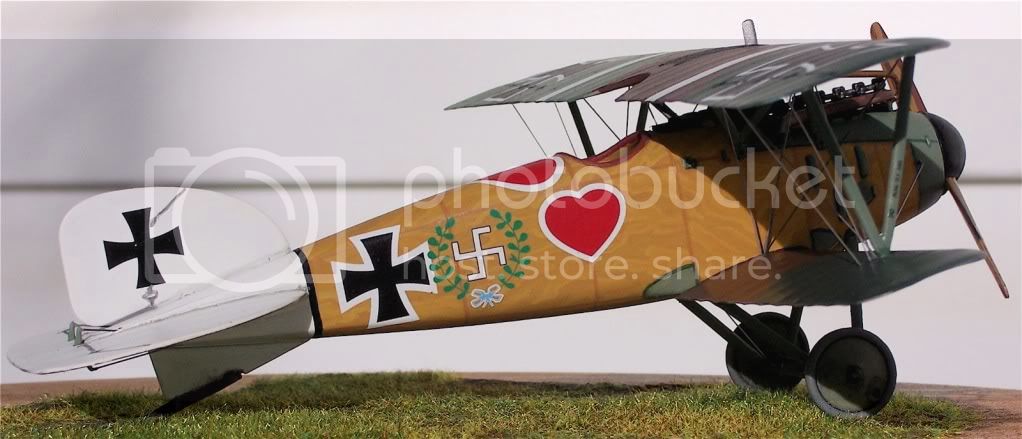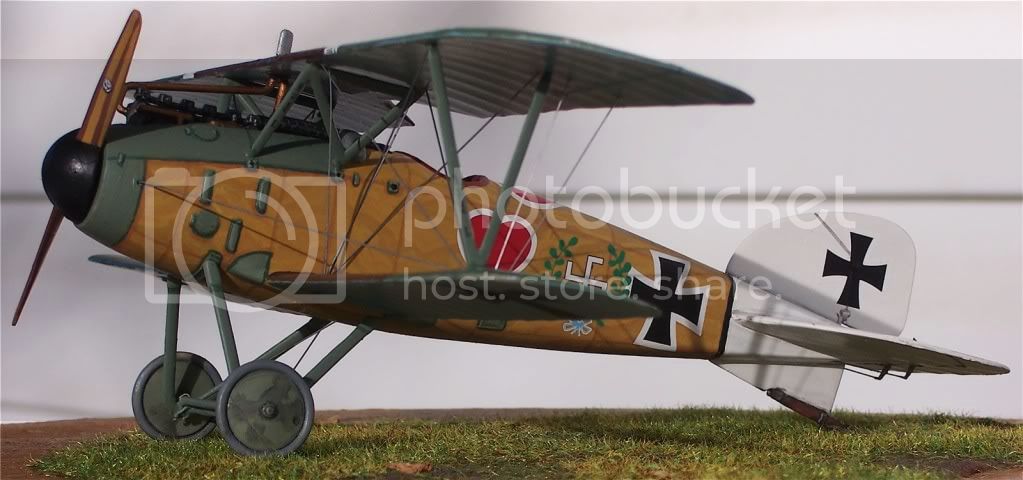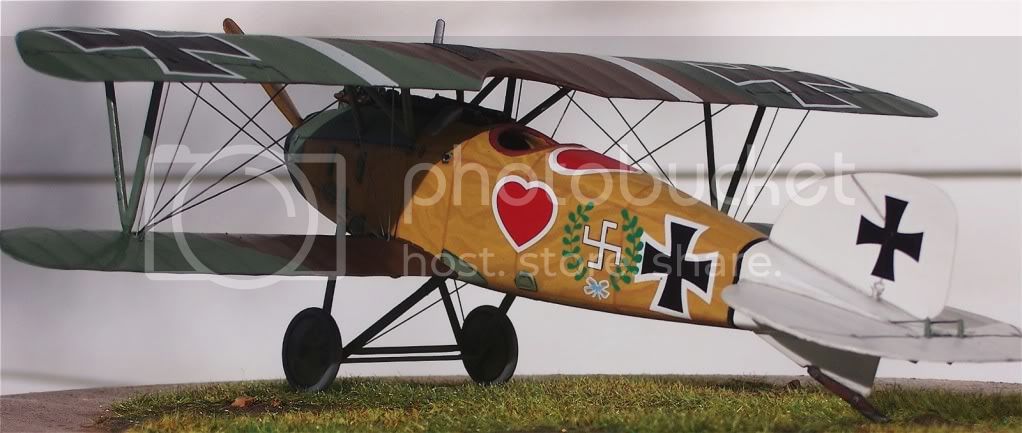My method is a freehand application of the wood grain patterns with oil based enamel paints. The paints are mixed to different hues of the base color. The variation in the colors should be subtle and not dramatically lighter or darker than the base color to be successful. I alternate the pattern on each panel to show that multiple pieces were used.
I use Humbrol #63 which is a warm honey brown as the base coat for the fuselage. For the lighter hues I mix Humbrol #74 which is a yellowish ivory color, with the base color. For the darker hues I mix #73 which is a reddish leather color, with the base color as well. I do all of this mixing on large format post-it notes, but you can use any type of material as the palette of your choice. The base color is applied with a #1 Round paintbrush. I use a #0 Round for blocking in the patterns of the wood grain. Finally, I use a #00 Liner brush for the high-light and low-light details. Use good brushes to get the best results.
I apply the base coat with a #1 Round paintbrush and let that dry for at least 24 hours to let it cure. I use solvents/thinners to mix the different colors so a properly cured base coat will resist mixing when later coats are applied.
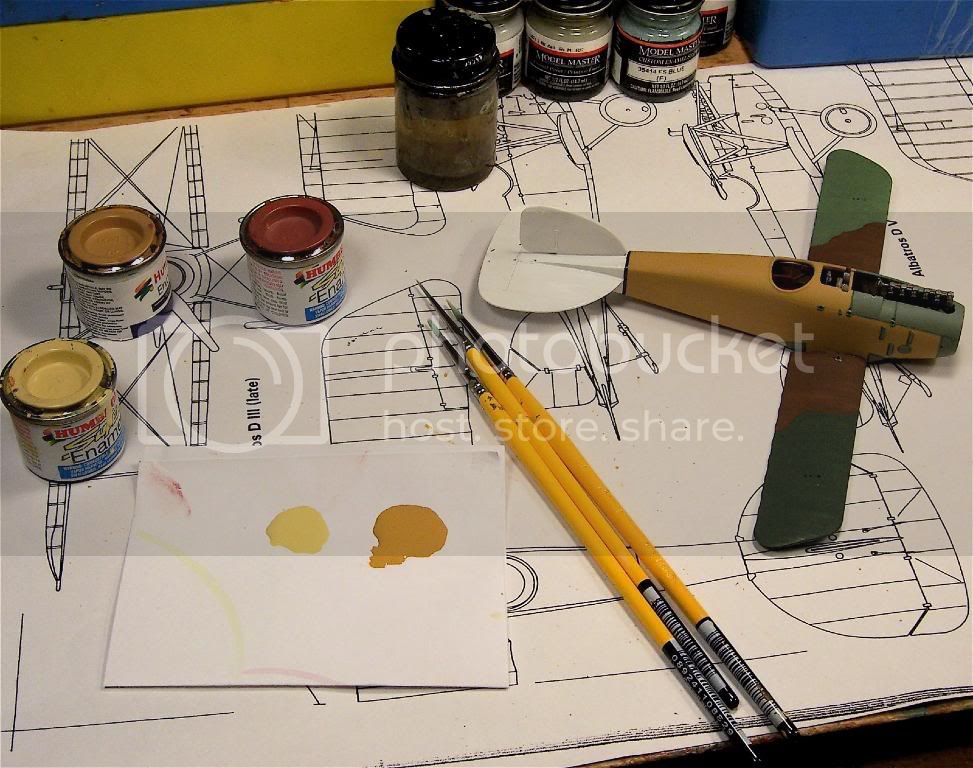
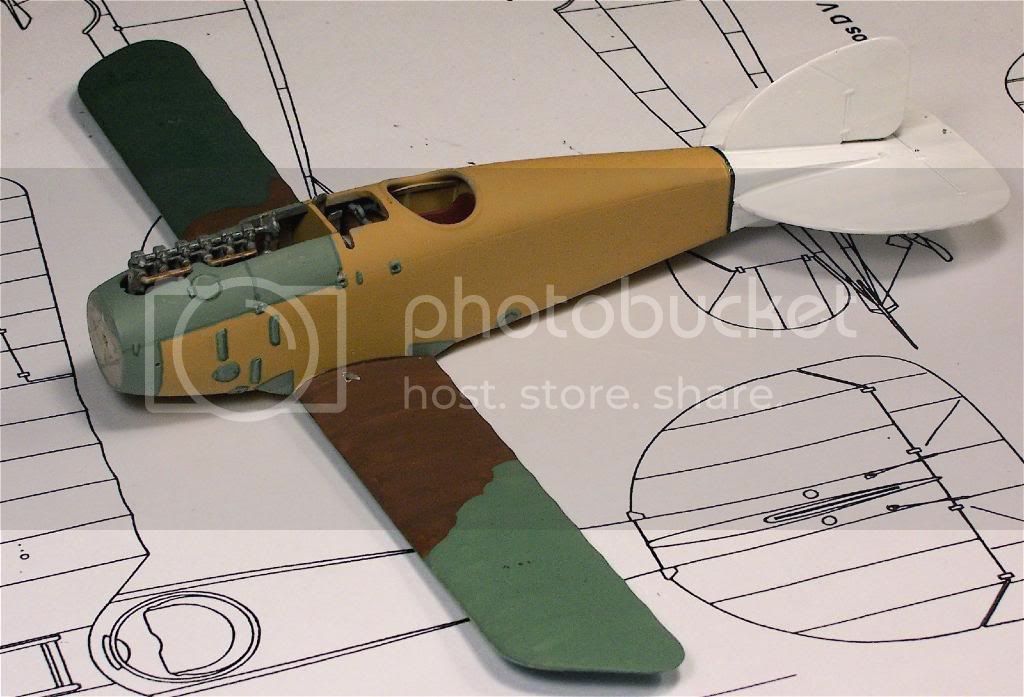
I start the wood grain process by producing the light variations first. Using my #0 Round paintbrush and a post-it, I mix the base and the lighter color to a ratio of 85/15 and block in the initial wood grain patterns. This ratio can vary according to results. I apply this mixture to the bottom panels to test the effect of the lighter wood grain patterns. Experiment on this part of the model first so you can adjust your mixture as necessary. See how it looks wet and then when its dry and adjust your mixture accordingly.
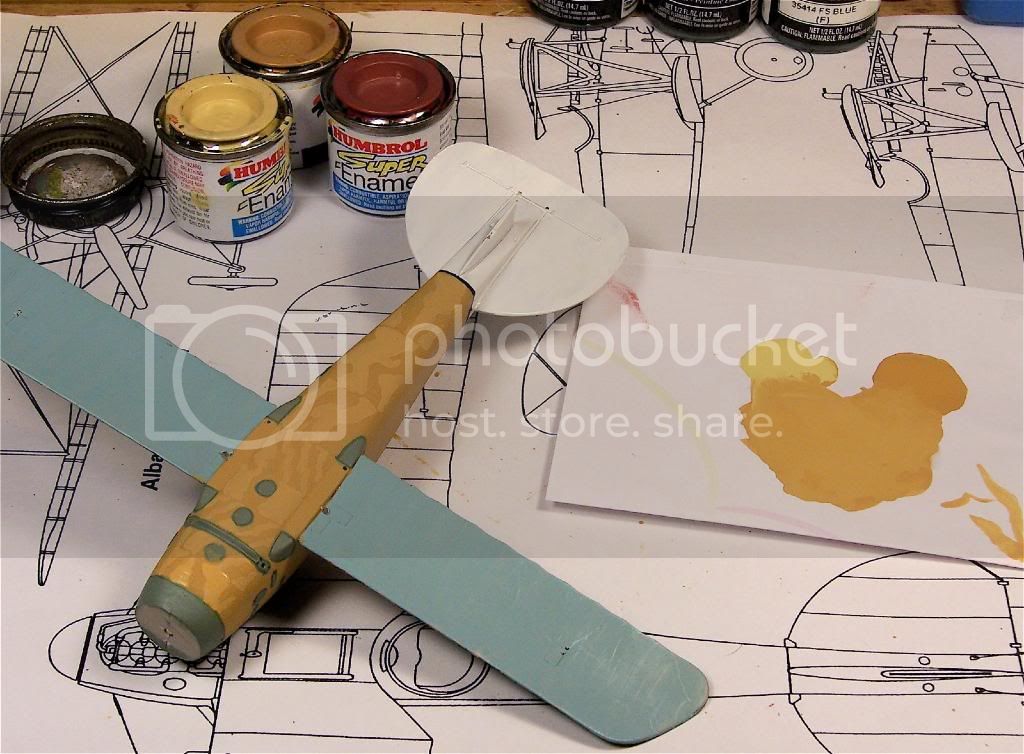

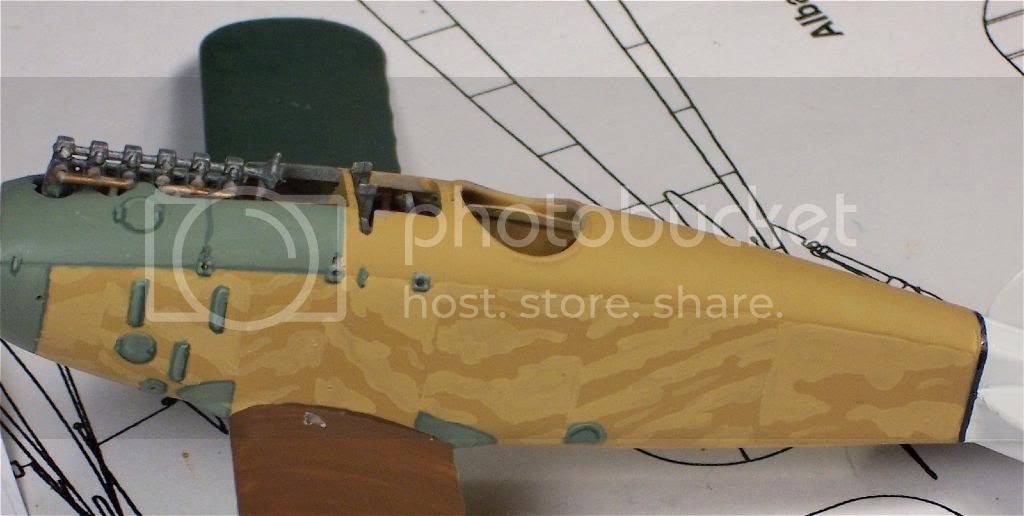
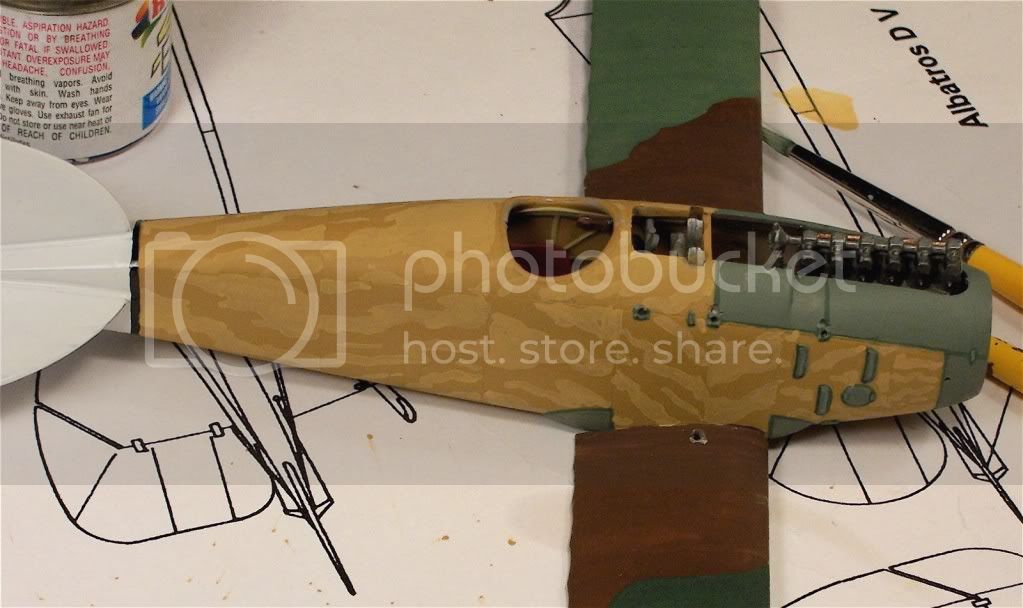
Next I pull out the #00 Liner and mix an even lighter ratio of about 70/30, base color to the lighter color on a new palette and apply it along contour lines and inside the lighter patterns. This is your high-light variation. I tested this hue against the colors on the first palette which had dried over night. Work on the underside again so you can adjust your mixture.



Still using the #00 Liner I mix more of the base color into the lightest variation. I try to mix this color to fall in between the 85/15 and the 70/30 variations and apply this inside the dark and light patterns.

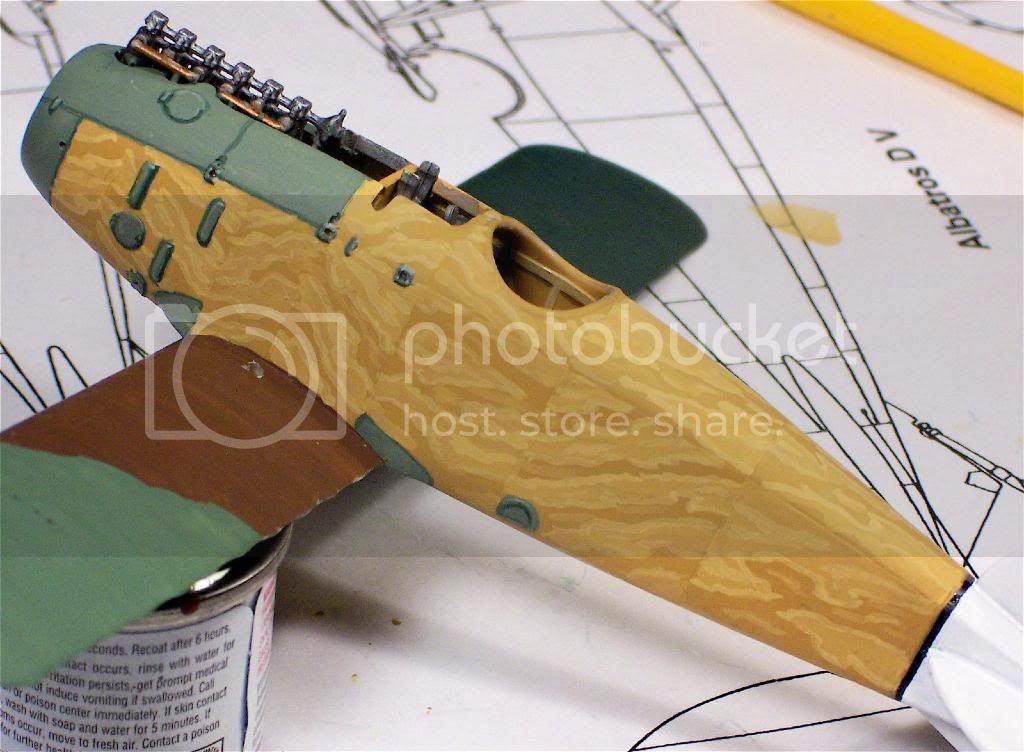

To finish the wood grain, still using the #00 Liner, I mix the base Humbrol #63 with Humbrol #73 at a ratio of 95/5 base to darker color. I then apply this sparingly to contour lines and inside the dark and light patterns.
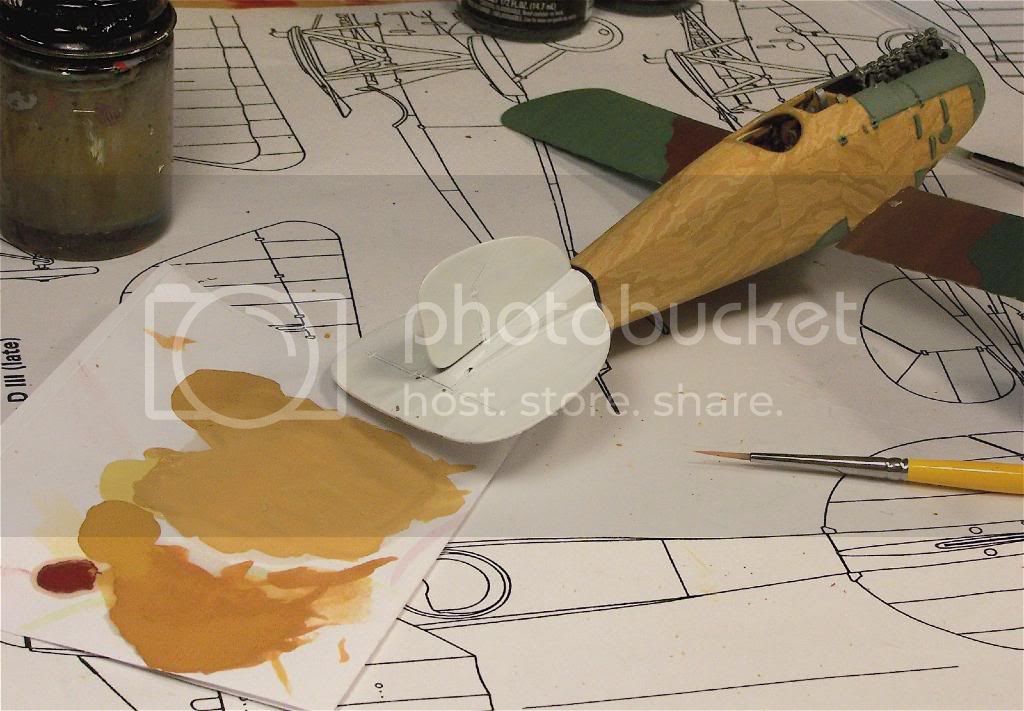
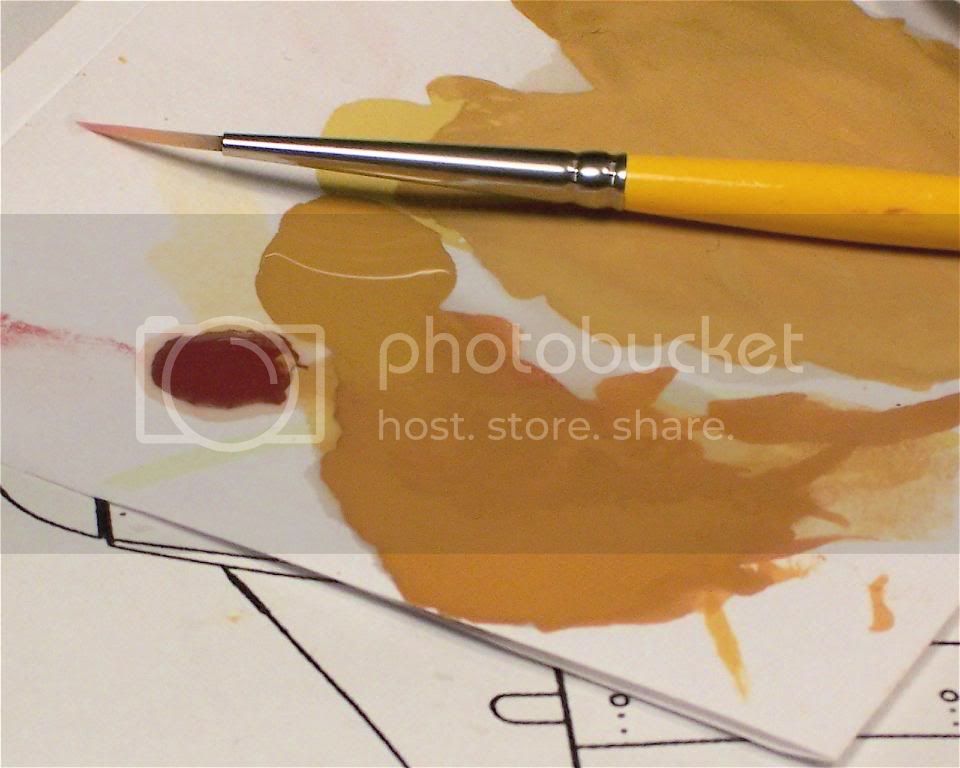

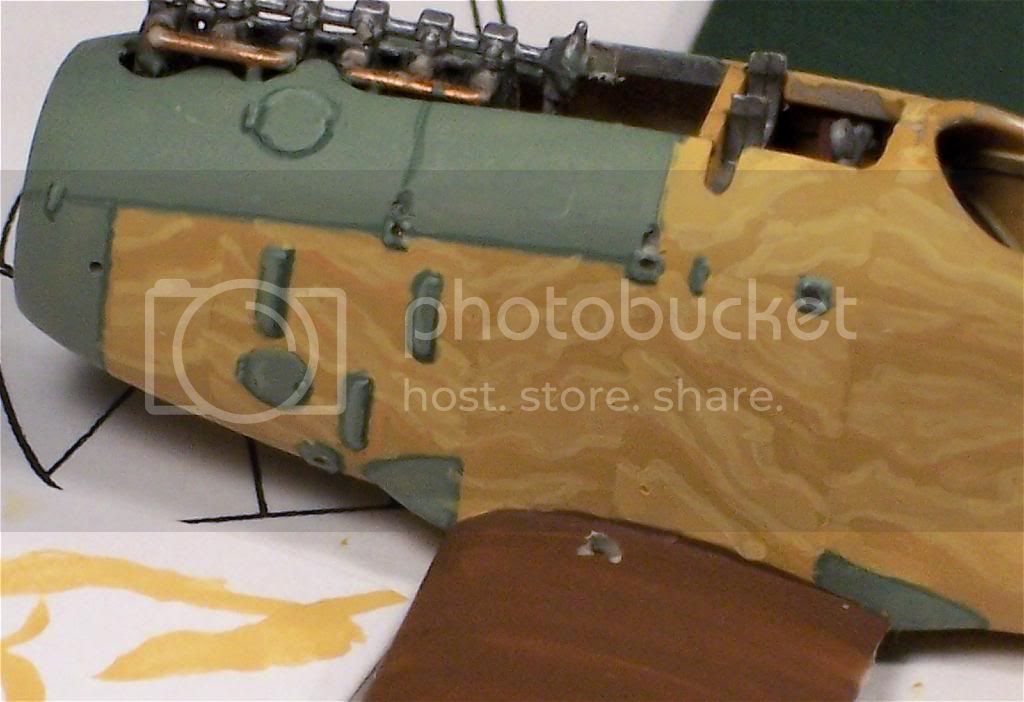

The Final step is to paint in the panel seams. I try to keep this variation subtle as well. Again, using the #00 Liner, I mix the #63 with the #73 at a ratio of 90/10 and apply that to the seams and along the edges where metal and wood meet.



There you have it. I have quite a bit of work left to finish this kit. I will do most of the touch up work on the fuselage and coat it with some future polish to protect the finish. Decals and another thin coat of future. Feel free to experiment with this and make it your own in any way that works for you.
Model ... I mean, paint on!
Dwayne














